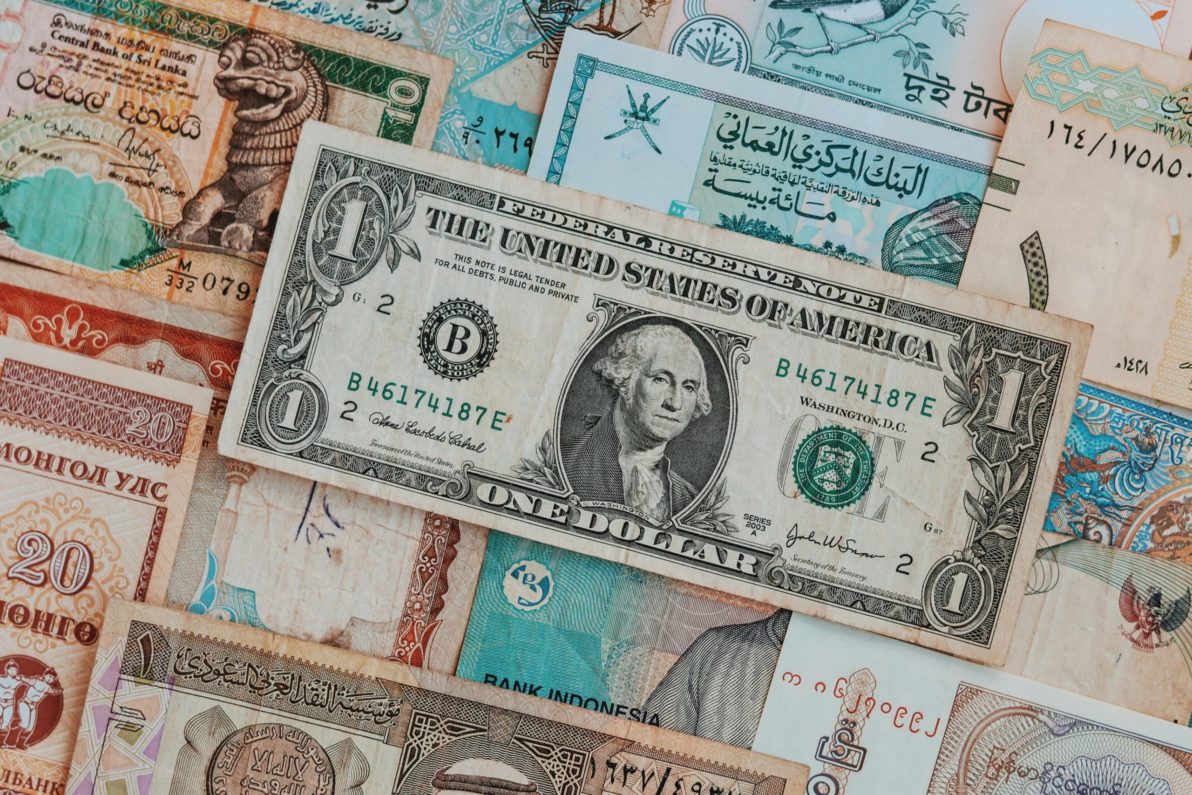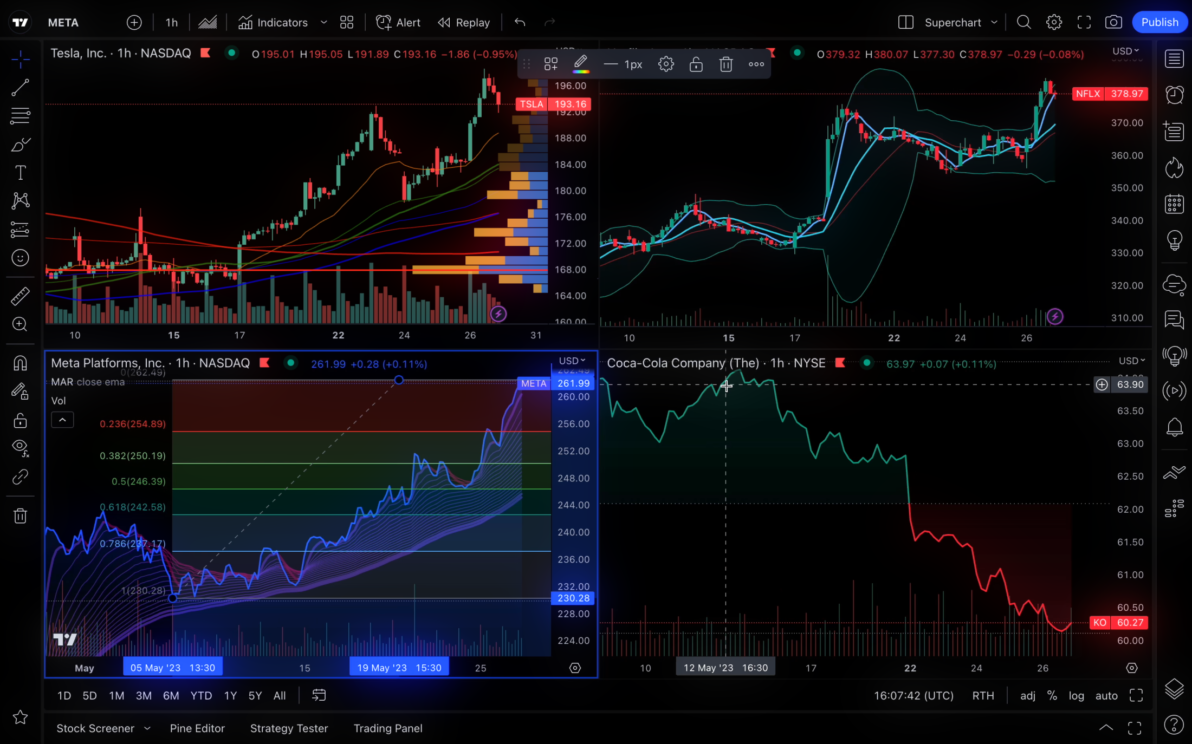Multi-Currency Investing: Practical Guide

Multi-Currency Investing: Turning Exchange Rates into Opportunities
Reading Time: ~10 minutes
In today’s interconnected world, investing across multiple currencies can be more than just a hedge against exchange rate fluctuations—it can be a strategic advantage. Whether holding assets in dollars, euros, pounds, or emerging market currencies, a well-structured multi-currency portfolio allows investors to capitalize on shifting exchange rates, mitigate currency risk, and enhance financial flexibility.
For those with multiple residencies or international mobility, investing in various currencies offers an additional benefit: the ability to leverage currency fluctuations to optimize purchasing power. For example, someone with Spanish and Colombian citizenship could build wealth in both euros and pesos, allowing them to capitalize on favorable exchange rates when deciding where to spend or invest.
However, currency investing is not risk-free. BrokerSuperMarket does not provide financial advice nor guarantees positive returns, as exchange rates are influenced by complex economic and political factors. This article explores how to construct a multi-currency portfolio, the role of hedging versus diversification, and how strategic currency allocation can offer global financial flexibility.
Understanding Multi-Currency Investing
The Role of Currency in Investment Portfolios
A multi-currency portfolio distributes investments across assets denominated in different currencies, expanding financial reach while reducing concentration risk. Instead of being fully exposed to a single currency’s fluctuations, investors can spread risk and capitalize on global economic cycles.
Key approaches include:
- Holding assets in multiple currencies (e.g., USD, EUR, GBP, or emerging markets like COP or BRL).
- Investing in foreign stocks, bonds, or real estate that provide natural currency exposure.
- Using currency-hedged funds to manage volatility.
- Engaging in Forex trading (foreign exchange), where currencies are actively bought and sold for profit.
Forex is one of the most direct and liquid ways to trade currencies, but long-term investors can also gain currency exposure through multi-currency funds, foreign assets, or diversified savings strategies.
Forex: The Most Active Multi-Currency Market
Forex (foreign exchange trading) allows traders to buy and sell currency pairs—such as EUR/USD or GBP/COP—speculating on exchange rate movements. Unlike stocks or bonds, Forex operates 24/5, and leverage allows traders to control larger positions with less capital.
Key Features of Forex Trading:
- High liquidity: The Forex market is the largest in the world, with daily trading volumes exceeding $7.5 trillion.
- Leverage: Traders can control larger currency positions with smaller initial capital, increasing both potential gains and risks.
- Speculative nature: Unlike long-term investments, Forex is primarily used for short-term profit opportunities based on macroeconomic trends, geopolitical events, and interest rate differentials.
However, Forex trading is highly volatile, and speculative strategies carry significant risk. Investors must weigh the potential for profit against the risks of leverage and market swings before engaging in currency trading.
Hedging vs. Multi-Currency Diversification
Hedging meaning: Risk Reduction Focus.
Hedging strategies protect investments from currency depreciation. Instead of capitalizing on currency fluctuations, hedging minimizes their impact.
Common Hedging Tools:
- Currency-hedged ETFs & mutual funds: Provide global exposure while reducing foreign exchange risk.
- Futures, options, and forwards: Advanced financial instruments to offset risk in currency pairs.
- Foreign bonds in stable currencies: Investing in government or corporate bonds in currencies like USD, EUR, or CHF.
Who should hedge?
- Investors with fixed income needs in a specific currency.
- Those who prioritize stability over currency appreciation potential.
Multi-Currency Investing (Growth & Flexibility Focus)
Instead of offsetting currency risk, multi-currency investing embraces it—allocating assets across different currencies to capture appreciation and optimize global spending power.
Who benefits from this approach?
- Individuals with international mobility (dual citizenship, expatriates, frequent travelers).
- Investors who live, work, or retire across multiple countries.
- Those seeking to take advantage of currency strength in different regions.
Additional Multi-Currency Investment Avenues:
- Foreign stocks & bonds (investing in international markets in different currencies).
- Real estate in foreign currencies (buying property abroad as a store of value).
- Multi-currency savings accounts or fixed deposits (holding cash in different currencies for spending flexibility).
- Cryptocurrency as an alternative store of value (using digital assets for currency diversification).
Example: Leveraging Dual Residency for Multi-Currency Wealth Growth
A Spanish-Colombian citizen could:
- Hold savings in euros when the currency is strong, benefiting from stability.
- Convert to Colombian pesos when the exchange rate is favorable, maximizing purchasing power.
- Invest in assets across both countries, allowing greater flexibility in deciding where to live, spend, or retire.
This ability to strategically allocate funds where they provide the greatest utility is a major advantage of multi-currency investing.
Why Consider a Multi-Currency Portfolio?
- Risk Diversification
- Avoids overexposure to a single currency’s economic risks.
- Protects against inflation spikes in one country by maintaining assets in another.
- Currency Appreciation as an Investment
- Holding assets in stronger currencies over time may enhance long-term returns.
- A weakening home currency increases the local value of foreign investments.
- Financial Flexibility Across Borders
- Those with international mobility can adjust investments based on currency fluctuations.
- Example: A European investor with Colombian and US assets can opt to withdraw funds where exchange rates are most favorable.
- Access to Global Markets
- Expands investment opportunities beyond domestic stocks and bonds.
- Enables participation in faster-growing economies and industries.
- Tailored Investment Approach
- Some prioritize hedging for stability, while others seek multi-currency growth.
- Personal goals, risk tolerance, and lifestyle factors determine the best strategy.
Practical Guide to Multi-Currency Investing
- Assess Your Currency Exposure
- Determine how much of your portfolio is in foreign-denominated assets.
- Consider income sources, expenses, and potential relocation plans.
- Choosing Between Hedging or Diversification
- Hedging: Minimizes risk for a specific currency (e.g., GBP/USD, COP/USD) via hedged ETFs or forward contracts.
- Diversification: Invests across multiple currencies, allowing one currency’s strength to offset another’s weakness.
- Selecting the Right Tools
- Multi-Currency ETFs & Funds: Offer diversified global currency exposure.
- Direct Foreign Assets: Buying stocks, bonds, or real estate in different countries.
- Currency Accounts: Holding savings in multiple currencies for spending flexibility.
- Managing Costs
- Watch for currency conversion fees and tax implications.
- Consider low-cost multi-currency platforms to minimize transaction expenses.
- Regular Monitoring & Rebalancing
- Track economic conditions affecting currency valuations.
- Adjust holdings based on exchange rate movements and personal financial shifts.
Case Study: Multi-Currency Investing in Action
Background
An investor with €200,000 in European assets wants to expand into emerging markets while maintaining access to stable currencies. The investor diversifies across:
- €100,000 in European equities (for long-term stability).
- $70,000 in US bonds (as a defensive hedge against volatility).
- €30,000 in Colombian assets (targeting higher growth potential).
The goal is to leverage currency fluctuations while ensuring liquidity in multiple markets.
Strategic Adjustments Over Time
Scenario 1: The Euro Weakens Against the Dollar
After an economic downturn in Europe, the euro depreciates against the US dollar (e.g., from 1 EUR = 1.15 USD to 1 EUR = 1.05 USD).
Investor Action: Instead of withdrawing from European assets, the investor converts USD holdings into euros to benefit from the stronger dollar.
💡 Outcome (Better Purchasing Power):
- With a €10,000 withdrawal, the investor would have previously received $11,500 at the old rate (1 EUR = 1.15 USD).
- At the new rate (1 EUR= 1.05 USD), that same $11,500 now converts into €10,952—a €952 gain just from the exchange rate shift.
- This additional amount can be reinvested into undervalued European assets, allowing the investor to buy more shares at lower prices.
Scenario 2: Allocating More to Emerging Market Currencies
At the same time, the Colombian peso strengthens against the euro (e.g., from 1 EUR = 4,600 COP to 1 EUR = 4,200 COP).
Investor Action: The investor shifts €5,000 from European holdings into Colombian assets before the peso appreciates further.
💡 Outcome (Future Benefits of Multi-Currency Investing):
- Before the peso strengthened, €5,000 would have bought 23,000,000 COP (at 1 EUR = 4,600 COP).
- After the peso strengthens to 1 EUR = 4,200 COP, the investor’s 23,000,000 COP holdings now have a higher value in euro terms—worth ~€5,476.
- If the investor later moves to Colombia or spends in COP, this higher purchasing power means they can afford more in local goods, services, or real estate.
Key Takeaways from the Case Study
- Tangible Benefit of Exchange Rate Movements: The investor gains nearly €1,000 in extra purchasing power just by shifting funds from a stronger USD to a weaker EUR before converting.
- Strategic Emerging Market Exposure: Allocating capital into Colombian assets before a peso appreciation means the investor can later cash out at a stronger rate, increasing their euro-equivalent wealth.
- Flexibility for Future Living or Spending Needs: If the investor chooses to relocate to Colombia, the stronger peso means greater purchasing power for housing, local investments, or everyday expenses.
This real-world example demonstrates how multi-currency investing is not just about portfolio growth but also about real financial flexibility—allowing investors to shift capital where it holds the most value.
Conclusion
Multi-currency investing transforms exchange rates into an opportunity rather than a risk. By strategically allocating assets across different currencies, investors can hedge against volatility, optimize purchasing power, and gain financial flexibility. However, no strategy guarantees success. BrokerSuperMarket does not provide financial advice nor guarantees positive returns. A well-managed multi-currency portfolio requires research, monitoring, and adaptability to global economic shifts.
Disclaimer: This article is for educational purposes only and does not constitute financial advice. No investment strategy guarantees returns, and past performance is not indicative of future results. BrokerSuperMarket does not offer personalised investment advice or promise financial outcomes.
February 14, 2025 05:07:00am
TradingView is a highly popular financial charting platform that caters to trade...
September 07, 2024 18:19:52pm
The energy industry remains crucial to the global economy, with traditional sect...







 en
en es
es